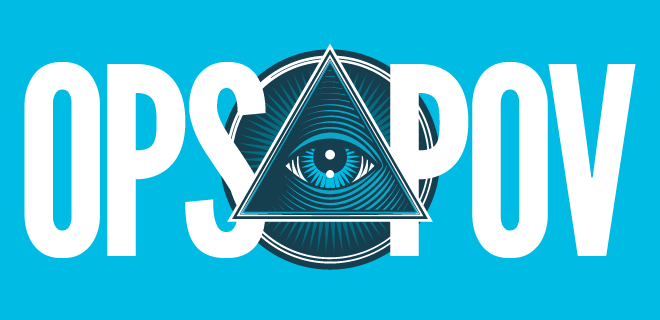
Nowadays, there’s no conversation to be had about publisher revenue without discussing the impact of COVID or the death of third-party cookies. These are simply the times that we’re living in.
A couple of weeks ago, we hosted a ThinkTank with AdPushup and a group of Monsters to discuss latency, UX, and their impact on revenue. The conversation quickly evolved into how the cookie’s demise might affect latency, UX, and by extension, revenue.
AdPushup’s Director of Publisher Development, Dikshant Joshi, shared some great advice for publishers. So, I followed up with him to understand more about what he was thinking in terms of how pubs can best prepare for the cookie crackdown, whether there’ll be just one ID to rule them all, whether client-side header bidding will become obsolete, and where he sees the industry heading overall.
Lynne d Johnson: One key question that popped up during the recent Think Tank we hosted with you was: Given the demise of 3P cookies what can publishers do today to prepare for that fateful day? You seemed to have a lot of insight on that one. What are your thoughts?
Dikshant Joshi: We hear a lot about third-party cookies dying and the negative impact it will have on publishers, advertisers/marketers, and ad tech/martech companies. But we often forget that this is already happening on a small chunk of the internet. Safari and Firefox are already blocking third-party cookies with their technologies called ITP and ETP, respectively.
According to Statcounter, Safari’s market share is around 19.14% and for Firefox it’s around 3.76%. Given these browsers don’t support third-party cookies, this is a good testing ground for publishers to implement ID solutions and closely monitor the performance on both of those browsers to objectively decide the path forward with any particular solution.
On these browsers, also monitor performance with respect to CPMs, coverage, and targeting types over the last couple of years to uncover trends that may have coincided with the launches of ITP and ETP. I would suggest not to panic when someone mentions the effects of the cookie’s demise. Ads will continue to be an important part of the ecosystem, but targeting accuracy will definitely take a hit, making it less relevant for users.
LdJ: But, fewer third-party calls will be good, right? Yet, I suppose there will be more calls for ID solutions. So that sounds like UX will have to dramatically change. What’s your thinking here?
DJ: Ad tech doesn’t want to give up on the ability to target users and hence we have numerous ID solutions popping up. Likewise, there are 20+ ID solutions listed on Prebid. This feels like nostalgia for the industry. I remember when header-bidding, as a concept, first entered and a lot of focus was on which wrapper solution would be the ultimate winner in the race. Numerous wrappers were competing and some malpractices were also noticed around this time. However, Prebid shined out in this crowd simply because it was open-source, transparent, secure, and supported by the top SSPs/Bidders, which ultimately boosted adoption.
In the same way, the winning ID solution should be open source, transparent, and neutral (not owned by any of the parties in the ecosystem) with the ability to crack the supply (publisher adoption) and demand (SSPs/DSPs adoption). Overall, when the ID solutions are married with Consent Management Platforms, that’s when targeting problems for advertisers and publishers will be solved without negatively impacting user experience.
LdJ: I’ve heard some talk about the third-party cookie’s ending also meaning the end of client-side header bidding altogether. Do you have an opinion on this?
DJ: Client-side header bidding is open and transparent if compared to server-side solutions. Hence, it will continue to evolve over the years.
The mass adoption of Prebid.js is made possible by the support from the community. With the recent announcement that Unified ID 2.0 will be operated by Prebid, bringing unparalleled support to it. However, I have my doubts that its current shape and form (i.e. hashing email addresses) might not be the best way forward. But with the affiliation of Prebid, it may evolve into the go-to solution for publishers. On the other hand, Shared ID could be a community-owned solution that could solve for this and provide better segmentation and targeting.
LdJ: Overall, where do you see the industry heading with respect to the demise of the cookie, advertiser targeting, and publisher CPMs?
DJ: I wish there was a straightforward answer to this. I see this as a complex problem that requires a multifaceted solution. The digital industry will continue to boom, but ad targeting will massively evolve. In the short term, retargeting may decrease as it is heavily reliant on third-party cookies and we will see a return of contextual advertising.
Of all players, I believe Google will continue to thrive in terms of targeting capabilities. They recently shared more details about their Federated Learning of Cohorts (FLoC) proposal coming out of the Privacy Sandbox initiative. It states that their tech will match at least 95% of the conversions per dollar spent when compared to cookie-based advertising.
This should solve the problem for advertisers on Google Display Network. It will be interesting to see how they solve the problem of retargeting for those advertisers. Meanwhile, in the case of Prebid, an open, transparent, and industry-adopted ID solution could lead the way—Shared ID and Unified ID being my favorites. The importance of first-party data for publishers and marketers will rise where large companies will continue to invest in these strategies and the smaller players will look to work with technology giants like Google for solutions.

